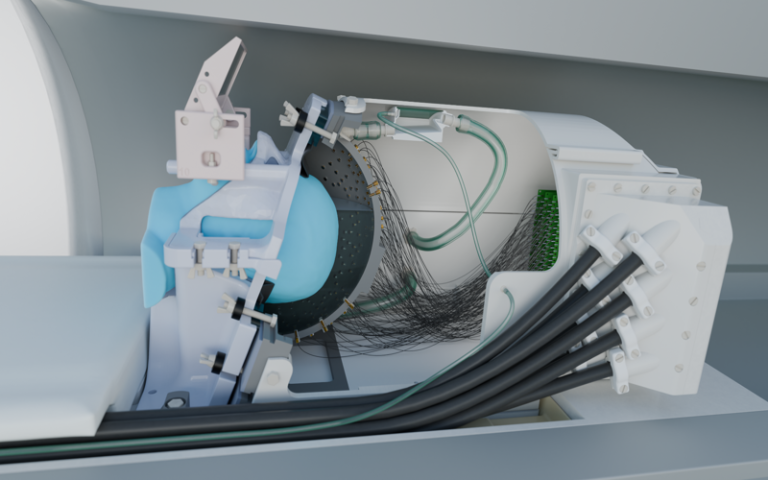Researchers at University College London and the University of Oxford have developed a wearable ultrasound device that can precisely stimulate deep brain regions without the need for surgery. This breakthrough could transform treatment options for neurological and psychiatric disorders such as Parkinson’s disease, depression, and essential tremor.
The technology is based on transcranial ultrasound stimulation, which uses gentle mechanical pulses to influence how neurons communicate. While previous systems struggled to reach deep brain structures with precision, the new device can target areas up to one thousand times smaller than conventional ultrasound systems and thirty times smaller than earlier deep brain models.
The helmet contains 256 ultrasound elements that send focused beams to specific brain regions. A soft plastic face mask helps stabilize the head and improve targeting accuracy. In tests with seven human volunteers, researchers successfully stimulated the lateral geniculate nucleus, a small structure in the thalamus involved in visual processing. Functional MRI scans showed increased activity in the visual cortex during stimulation and sustained decreases in activity for up to forty minutes afterward, demonstrating both precision and lasting effects.
Participants did not consciously notice changes in their vision, but brain scans confirmed significant shifts in neural activity. These results suggest the system could be used to modulate brain circuits involved in movement, mood, and cognition without invasive procedures.
The device is compatible with real-time MRI monitoring, which opens the door to closed-loop neuromodulation and personalized therapies. It also offers a safer alternative to deep brain stimulation surgery, which involves implanting electrodes and carries risks such as infection and bleeding.
Article from UCL: New ultrasound helmet enables deep brain stimulation in people without surgery
Abstract in Nature Communications: Ultrasound system for precise neuromodulation of human deep brain circuits

